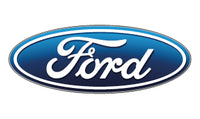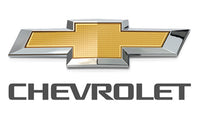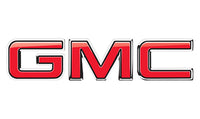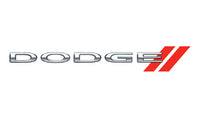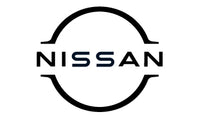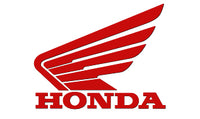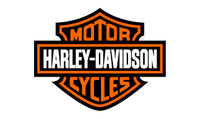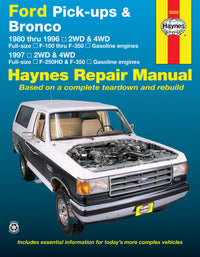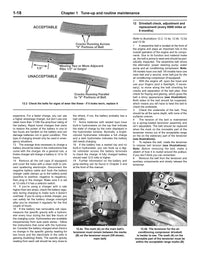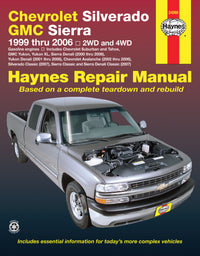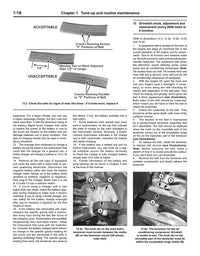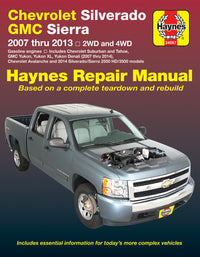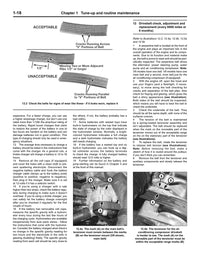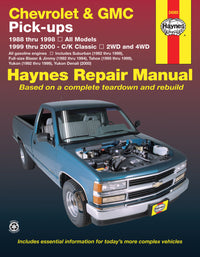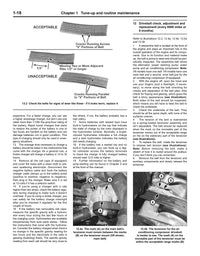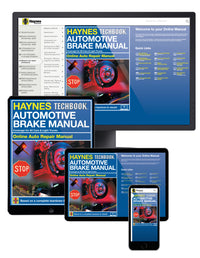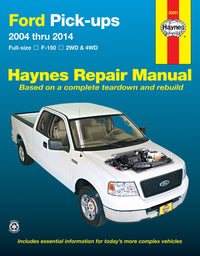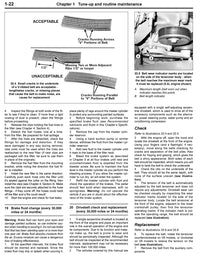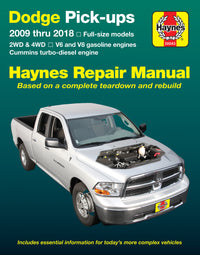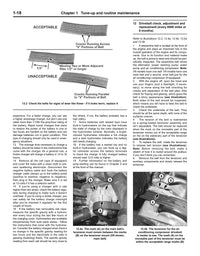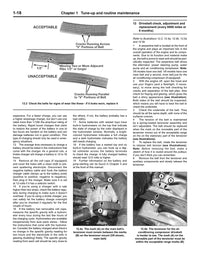When Harley-Davidson released its twin cam V-twin motor in 1999, it represented a huge leap forward for the company. Thart's because the Twin Cam shared almost no parts or specifications with the original Harley OHV motor of the 1930s, the Knucklehead. Indeed, just 18 part numbers were shared between the Twin Cam and the motor it replaced. The Haynes Twin Cam Manual covers all models from 1999-2010.
In order to quiet things down (to meet government noise regulations), and improve the pushrod geometry, the single, central, gear driven cam was replaced by two cams, one at the bottom of each cylinder, and driven by chains. That last "feature" would prove to be one of the Twin Cam motor's major failings over the years, as the chain tensioner was not up to the job and need to be inspected every 15,000 miles, or replaced with an upgraded tensioner system or gear driven cams.
The other huge improvement in refinement was a new, more solid mounting of the transmission to the rear of the engine cases. The Harley-Davidson big twin was still not a unit design, with crankshaft and transmission sharing cases (like the Sportster), but the primary drive housing and cover were no longer structural, and now only hold the oil and locate the tensioner. That new automatic tensioner is another one of the few weaknesses in the Twin Cam design and needs to be inspected periodically or upgraded as well. This new transmission mounting system, and the Softail's solid engine mounts, are what delayed the release of Twin Cam powered Softail models until the 2000 model year.
1999 - The Dawn of the Twin Cam Era
Initial planning of the Twin Cam, then code-named P-22, began in 1992. The goals were to increase power and reliability, decrease noise and emissions, and retain the traditional layout and look. There were delays because of problems with oil leaks and scavenging, as well as a battle between the styling and engineering departments over adding an external oil cooler or going with a substantial increase in the fins on the motor. The larger fins won out and compared to the Evolution motor, the Twin Cam has more than 50% greater surface area for cooling, even though it only has about 10% more displacement at 1450cc, or 88 cubic inches.
Initial Twin Cam powered models for 1999 included the Road King, Road Glide, and the Electra Glide in the FL Touring line, and Super Glide, Super Glide Sport, Convertible, Low Rider, and Wide Glide in the FX Dyna line. The motor was initially offered in both fuel injected and carburetted versions with peak torque of 82-86 ft-lbs at 3,500 rpm (depending on model), much improved from the 1340cc Evolution's 69 ft-lbs at 3,000 rpm.

2000 - The Softail and the Twin Cam 88B
Perhaps the biggest unforeseen problem with the brilliant new Twin Cam 88 was that it would not fit in the Softail bikes without a substantial redesign of the bike itself. The Softail frame was a tighter fit and did not provide room to rubber mount the motor like the Dyna and touring models do, which was considered a necessity due to the larger pistons and increased vibration. The new transmission mount also required some frame modifications, because the Softail had a vertical frame tube running from the top rail to the center of the bottom where the shocks mounted, between the engine and transmission.
In 2000 the Twin Cam 88B was introduced specifically for the Softail line, with a pair of small balance shafts mounted in the engine cases, in front of and behind the crank. This system eats up about three horsepower, and adds 14 lbs to the engine, but reduces vibrations by 90%. The new counterbalanced engine is so smooth, the transmission has to be revised because vibrations reduce friction and help the gears slide across each other.
Initial Softail models for 2000 powered by the Twin Cam 88B include the Heritage Softail, Springer Softail, Fat Boy, Night Train, Softail Deuce, Standard, and Custom.
Also noteworthy for 2000, the CVO team introduced the first bigger, stronger, Twin Cam motor with 95 cubic inches, in the Screamin' Eagle Road Glide.

2003 - 100 Year of Harley-Davidson
With all the changes in 1999-2000, things were quite at Harley-Davidson for a few years, though in 2001 they switched to a better, Delphi EFI system on the bikes that were injected. 2001 was also the first year the Softail line was available with a fuel injected motor. There was also a special Screamin' Eagle Dyna Wide Glide offered in 2001 with the 95 cubic inch motor.
The biggest thing to happen in 2003 was the introduction of many special 100th anniversary models, celebrating the moment back in 1903 when the Davidsons and their friend Mr. Harley had first made a powered bicycle in their dirt-floored shed. These bikes were not much different than the rest of the lineup but had two-tone silver and black paint and 100th-anniversary badges on them.
Meanwhile, over at the CVO shop, they were busy hand building the first CVO Softail, the Screamin' Eagle Deuce, with the Twin Cam 95B. They also went even bigger in the touring bikes and tricked out the Screamin' Eagle Road King with a new 103 cubic inch motor.

2006 - Building a Better Dyna and a Stripped Down Bagger
Again there were not many huge changes for a few years at Harley, besides the fresh "bold new graphics" and custom colors they introduce every year. In 2006, however, a new revised Dyna frame was introduced, and a 6-speed transmission debuted. Also notable is the introduction of the 35th-anniversary version of the Super Glide, with throwback red, white, and blue stripes, and the new, stripped-down, Street Bob.
Over in the touring bike lineup, a modern classic was introduced, called the Street Glide. A bagger with all the creature comforts, and a powerful sound system, the Street Glide had a cut down windshield, no trunk on the back, and plenty of attitude. This bike has become one of the favorite statring points of the custom bagger crowd.

2007 - EFI for All and a Bigger Better Twin Cam
Bowing to ever stricter smog laws, every Twin Cam powered bike for 2007 got electronic fuel injection. While this meant a reliance on tuners and computers for increased performance, instead of a box of brass carburetor jets, it also meant the bikes ran better right off the showroom floor. EFI is self-adjusting and will run just as good in the dead of winter in Denver, as it will in 110-degree heat in Death Valley.
The other major change in 2007 was the introduction of the Twin Cam 96 across the entire lineup. Unlike the CVO Twin Cam 95, the 96 got more displacement and torque from a longer 4.375" stroke, not a bigger 3.875" bore. Combine an even bigger 4" bore with the longer 4.375" stroke, and CVO had a new Twin Cam 110 motor in their Dyna, Softail, Electra Glide, and Road King Customs.

2008 - Wild Factory Softail Customs
There were not any major upgrades or updates to the Harley lineup this year, but there was major work from the styling department in two new, wild, Softail models.
The Rocker started by mounting a special swingarm and wide rear wheel to the Softail, then molding a rear fender, that rocked with the swingarm, and sat impossibly close to the tire. Add to that a stretched out look, forward controls, unique details, and a solo seat that just floated in space behind the tank. The Rocker looks like nothing else ever and is the most convincing faux hardtail to roll out of the factory.
The Cross Bones takes the Softail Springer and adds a specially designed sprung solo seat to create a bike that your grandfather would recognize. The name and black paint may try to convince you this bike is bad news, but the sprung seat delivers a ride that is all day comfortable.

2009 - Major Bagger Updates
The touring bike lineup got a major update for 2009, leaving almost no stone unturned. Starting with a new frame, the bikes also got a new swingarm, new engine mounts, new bodywork, a larger gas tank, and redesigned exhaust system. The result was a bike that handled and stopped better, was more comfortable, exposed the rider to less engine heat, and still looked awesome. Gross vehicle weight was up too, meaning you could pack more in the luggage, and still carry a passenger without overloading the bike.
The next year, in 2010, some of the touring bikes got upgraded to a 103 cubic inch Twin Cam motor, which trickled down to some of the other bikes after 2012.

2012 - Switchback
Despite what some people think, Harley-Davidson does change with the times, and in 2011 updated the Softail bikes to the more modern CAN BUS system of wiring. In 2013 all the rest of the Twin Cam models made the move as well, and in 2014 the Touring bikes received the Project Rushmore makeover with updated looks, brakes, suspension, infotainment, and even liquid cooling of the cylinder heads.
The last significant new Twin Cam bike, before the CAN BUS update, was the 2012 FLD Switchback, which was part Dyna and part touring bike. Though the Switchback is built on the Dyna frame, it carries the FL model prefix of a touring bike, plus a small windscreen, and factory hard bags. Both the screen and bags can be removed in minutes, to go from touring to cruising. This was one of the few non-touring bikes to get the factory 103 cubic inch motor.

